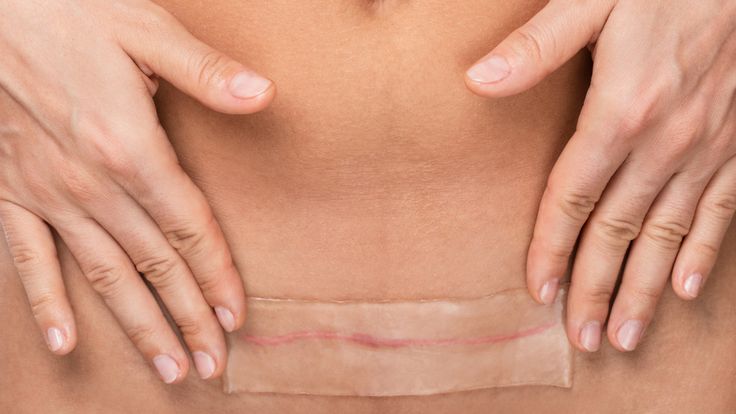The widening of scars after surgery is a direct manifestation of an imbalance in skin repair. When wounds heal, fibroblasts over-secrete collagen fibers. Without effective intervention, these fibers will be arranged disorderly like uncontrolled steel bars, causing the scar tissue to expand laterally. Many patients mistakenly believe that the widening of scars is an inevitable process, but they do not know that early care strategies can change this process. The key lies in rebuilding the microenvironmental balance of scar repair.

Why do traditional nursing methods often fall into misunderstandings?
Waiting for the scab to fall off naturally or applying vitamin E to soften the scar, these traditional practices may delay the healing process. The scab is essentially a product of cell necrosis in a dry environment. Forcibly retaining it will hinder the crawling of the epidermis, and oily substances may clog the pores and induce folliculitis. Clinical observations have found that more than 60% of scars that have not undergone professional intervention will increase in width, which exposes the limitations of the passive care model.
Repair scars with a silicone scar patch?
As a combination of physical barrier and biological regulator, the silicon scar patch works through three mechanisms: first, it creates a closed and moist environment to enhance the hydration of the stratum corneum and promote collagenase activity to decompose excess collagen; second, it applies static pressure to inhibit capillary proliferation and reduce the "congestive hypertrophy" of scars; third, some products add SPF sunscreen ingredients to block ultraviolet-induced pigment deposition. It is worth noting that the effect is more significant when worn continuously for more than 12 hours, which requires patients to establish a regular care cycle.
How does silicone scar gel complement patch care?
When scars are located in joint folds or areas where patches are prone to fall off, silicone scar gel can play a unique role. Its polymer network structure can form a flexible membrane on the skin surface that lasts for 8 hours, ensuring breathability and maintaining the release of active ingredients. The silicone oil molecules in the gel can penetrate into the dermis, regulate the expression of transforming growth factor β, and inhibit excessive scar proliferation at the molecular level. It is recommended to use it once in the morning and once in the evening, with the application range exceeding the scar edge by 2 mm, and massage until it is completely absorbed.
How to grasp the key points of in-home care?
The golden period of care is immediately after the stitches are removed, after surgery, when the wound strength is only 10% of normal skin. When cleaning the scar area, use an alcohol-free neutral lotion and avoid rubbing it hard. Cut the silicone scar patch to a size slightly larger than the scar, and ensure that the edges are flat and wrinkle-free. If using gel, wait until the wound is completely closed before applying it. The replacement cycle needs to be adjusted according to the exudate situation. It may need to be changed daily in the early stage, and it can be extended to 2-3 days after the scar stabilizes. Pay special attention to whether the skin has a rash, which may be an early sign of allergy.
How long does scar care need to last?
The scar remodeling period can be as long as 18 months, which means that the nursing battle line is much longer than imagined. It is recommended to adhere to daily care for the first 3 months, and then gradually transition to every other day use. For areas with a high risk of hyperplasia, such as the presternal area and scapular area, the care period can be extended to 1 year after surgery. Take photos of the scar regularly for comparison. When the scar color is found to be close to the skin color and the texture becomes softer, the intensity of care can be gradually reduced. It should be noted that there is a "rebound period" when the scar widens, and sudden interruption of care may lead to functional rebound.

Scar management is a long-term battle that requires a combination of scientific knowledge and standardized operations. The coordinated application of silicone scar stickers and gel provides a three-dimensional solution from the epidermis to the dermis to control the width of scars, but the final effect still depends on the caregiver's precise grasp of the timing of repair and strict control of the execution details. For more information on Innomed®Silicone Scar Dressing, Refer to the Previous Articles. If you have customized needs, you are welcome to contact us; You Wholeheartedly. At longterm medical, we transform this data by Innovating and Developing Products that Make Life easier for those who need loving care.
Editor: kiki Jia

 English
English عربى
عربى Español
Español русский
русский 中文简体
中文简体








